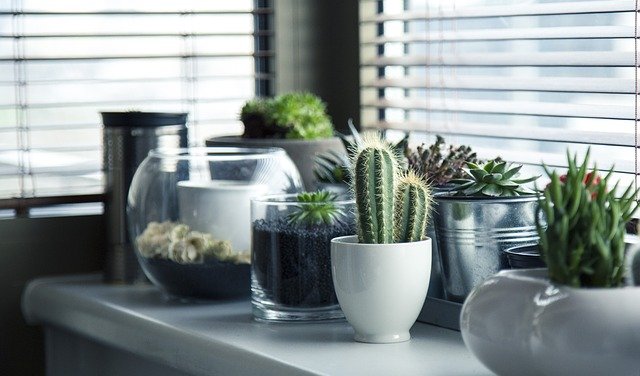When embarking on a bathroom makeover, it’s crucial to recognize the significance of meticulous planning. Your bathroom is an important part of your dream home; it serves both practical and aesthetic purposes. Whether remodeling an existing bathroom or creating one from scratch, thoughtful planning sets the foundation for a successful project.
In this post, we’ll cover eleven essential considerations for your bathroom makeover:
1. Assessing Your Needs and Space
Before diving into the world of design and décor, take a step back and assess your needs. Consider how you use the bathroom daily. Are you looking for a spa-like retreat or a functional space for a busy family? Balancing functionality with aesthetics is key to creating a bathroom that meets your lifestyle needs while reflecting your style.
Every bathroom comes with its own set of spatial constraints. Whether you have a small powder room or a spacious master bath, understanding your space’s size, layout, and configurations is essential. This evaluation will dictate design decisions and help optimize the use of space for maximum efficiency and comfort.
2. Establishing a Realistic Budget
Establishing a realistic budget is one of the first steps in planning a bathroom makeover. Consider all expenses, including material costs, labor fees, and unexpected contingencies. Setting clear financial parameters from the outset will help you make informed decisions and avoid overspending later.
While it’s tempting to splurge on luxurious fixtures and finishes, plenty of cost-saving options are available that don’t compromise on quality. From local shopping sales and sourcing materials to DIY projects and refurbished items, exploring budget-friendly alternatives can help stretch your budget without sacrificing style.
3. Researching Design Inspirations
With countless design styles, themes, and trends, gathering inspiration for your new bathroom is crucial in planning. Browse magazines, websites, and social media platforms to discover what resonates. Whether you’re drawn to minimalist modernism or classic elegance, compiling a mood board can help visualize your vision.
The internet is a treasure trove of design inspiration, with endless blogs, forums, and social media accounts dedicated to home décor. Follow interior designers, home improvement enthusiasts, and renovation hashtags for a constant stream of ideas and tips. See existing Modern National bathroom ware designs or any bathroom fixture sources to get inspirations.
4. Choosing the Right Fixtures and Features
Before shopping for your new bathroom, your fixtures should always put functionality at the top. Choose durable, high-quality fixtures that will withstand daily use and stand the test of time. Consider factors such as water efficiency, ease of cleaning, and compatibility with your bathroom’s design aesthetic.
In addition to essential fixtures, consider incorporating additional features that enhance your bathroom’s functionality and style. A well-designed vanity can provide essential storage while adding visual interest to the space. Thoughtfully placed lighting and mirrors can brighten and visually expand a small bathroom. Explore creative storage solutions to keep clutter at bay and maintain a clean, organized environment.
5. Prioritizing Functionality and Accessibility
A truly well-designed bathroom prioritizes comfort and convenience for all users, regardless of age or ability. To ensure safety and ease of use, incorporate accessibility features such as grab bars, non-slip flooring, and walk-in showers. Pay attention to layout and spacing to accommodate mobility aids and provide ample maneuvering room.
Today’s bathrooms can benefit from integrating smart technology to enhance efficiency and comfort. Consider installing programmable thermostats, motion-sensing faucets, and smart mirrors with built-in lighting and Bluetooth speakers. These innovations streamline daily routines and add a touch of luxury to your bathroom experience.
6. Selecting Suitable Materials and Finishes
The materials you choose for your bathroom can significantly impact its durability, maintenance requirements, and overall aesthetic. Opt for water-resistant materials such as porcelain tile, natural stone, and waterproof laminate for flooring and surfaces. Consider finishes that are easy to clean and maintain, especially in high-traffic areas like the shower and vanity.
Maintaining a cohesive design aesthetic throughout your bathroom is essential for creating a visually pleasing space. Choose finishes that complement each other and tie the room together, such as coordinating faucets, hardware, and lighting fixtures. Aim for a harmonious balance of colors, textures, and patterns to achieve a unified look that feels cohesive and inviting.
7. Optimizing Lighting and Ventilation
Natural light can transform a bathroom, making it feel bright, airy, and welcoming. Consider the placement of windows and skylights to maximize daylight while maintaining privacy. Frosted or textured glass can diffuse light while preserving a sense of seclusion. Supplement natural light with strategically placed artificial lighting for optimal illumination day and night.
Artificial lighting plays a crucial role in setting the mood and functionality of your bathroom. Incorporate a mix of task lighting for grooming and daily activities, ambient lighting for overall illumination, and accent lighting to highlight architectural features or create a focal point. Dimmer switches and layered lighting options offer flexibility and control to suit any occasion.
8. Planning Plumbing and Electrical Layouts
Careful planning of plumbing fixtures is essential to ensure proper bathroom drainage, water supply, and ventilation. Work with a professional plumber to map out the placement of toilets, sinks, showers, and tubs to optimize flow and functionality. Consider factors such as pipe routing, venting requirements, and access for maintenance.
Electrical outlets and fixtures must be strategically placed to ensure safety, convenience, and compliance with building codes. Plan the location of outlets for hairdryers, electric razors, and other grooming appliances to avoid overloading circuits. Install GFCI outlets near water sources to protect against electrical shocks. Consult with an electrician to ensure proper wiring and adherence to regulations.
9. Ensuring Proper Ventilation and Moisture Control
Effective ventilation is essential for maintaining a healthy and comfortable bathroom environment. Install exhaust fans to remove moisture and prevent mold and mildew buildup. Choose a fan with adequate capacity for the size of your bathroom and consider features such as humidity sensors and timers for optimal performance.
In addition to ventilation, proper waterproofing and moisture-resistant materials are essential for controlling humidity levels in your bathroom. Use waterproof membranes and sealants in wet areas such as showers and tub surrounds to prevent water damage and mold growth. Choose moisture-resistant paint and finishes for walls and ceilings to withstand the rigors of daily use.
10. Future-Proofing Your Bathroom Design
When planning a bathroom makeover, consider your long-term needs and lifestyle changes. Design with aging in place in mind by incorporating features such as grab bars, walk-in showers, and accessible fixtures. Opt for timeless design elements and flexible layouts that adapt to your evolving needs over time.
Flexibility is key to future-proofing your bathroom design. Choose modular fixtures and adaptable features that can easily be modified or upgraded as your needs change. Consider options such as adjustable-height showerheads, removable shower seats, and convertible vanities to accommodate different users and preferences.
11. Incorporating Green-Friendly Practices
Creating a green-friendly bathroom benefits the environment and enhances your household’s health and well-being. By reducing water and energy consumption, minimizing waste, and choosing eco-friendly materials, you can create a sustainable and environmentally responsible space that promotes a healthier planet.
Choose water-efficient fixtures such as low-flow toilets, faucets, and showerheads to reduce water usage. Opt for energy-efficient lighting fixtures and appliances to minimize electricity consumption. Select eco-friendly materials such as bamboo, recycled glass, and VOC-free paints to reduce environmental impact. Consider installing a dual-flush toilet or a greywater recycling system to conserve resources further.
Conclusion
Planning a bathroom makeover requires careful consideration of numerous factors, from space constraints and budget limitations to design preferences and sustainability goals. By prioritizing functionality, aesthetics, and practicality, you can create a bathroom that meets your needs and reflects your style and values.
Whether you’re embarking on a small renovation or a complete overhaul, thoughtful planning and attention to detail are the keys to success. With the right approach, your dream bathroom can become a reality, providing you and your family years of comfort, enjoyment, and satisfaction.












